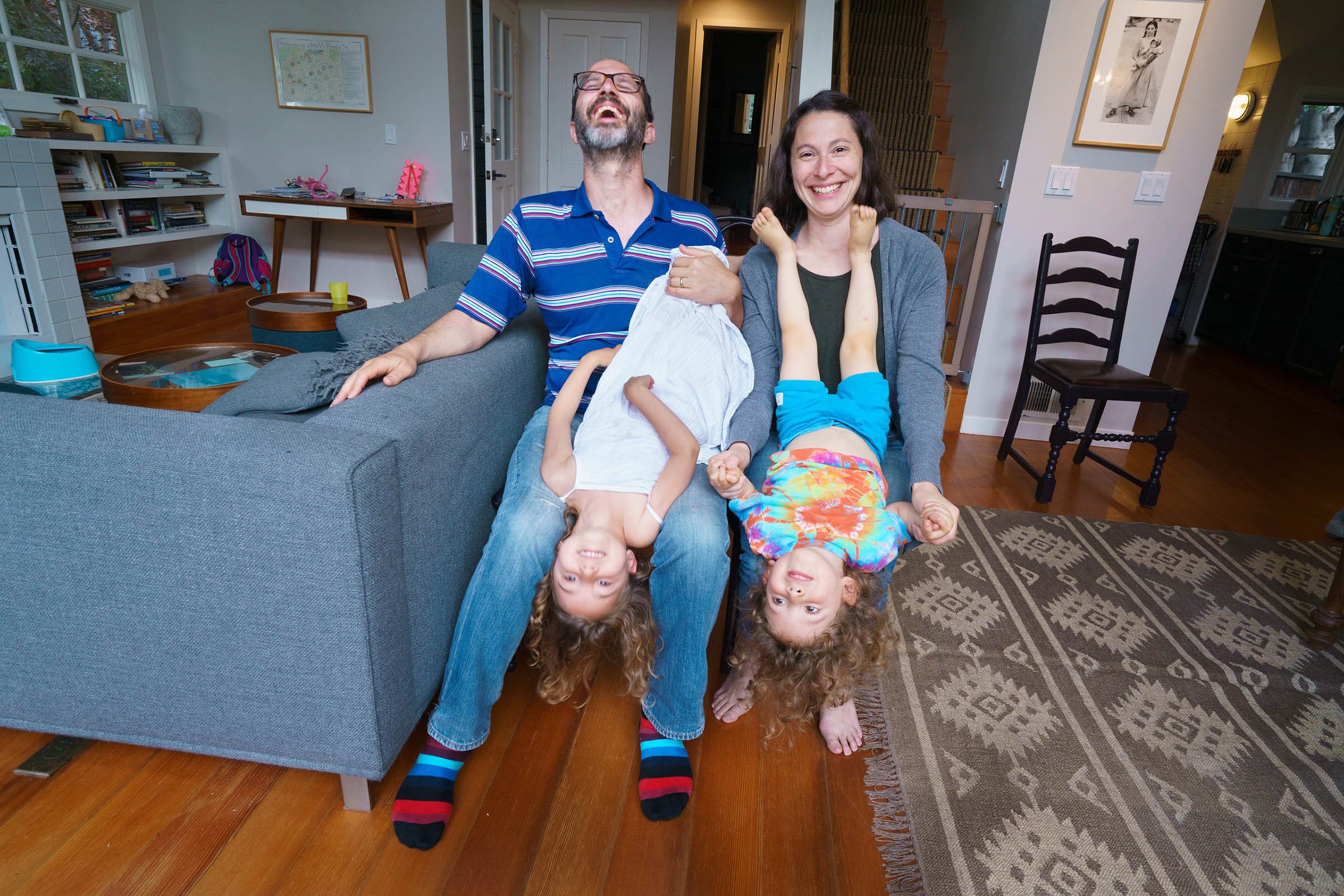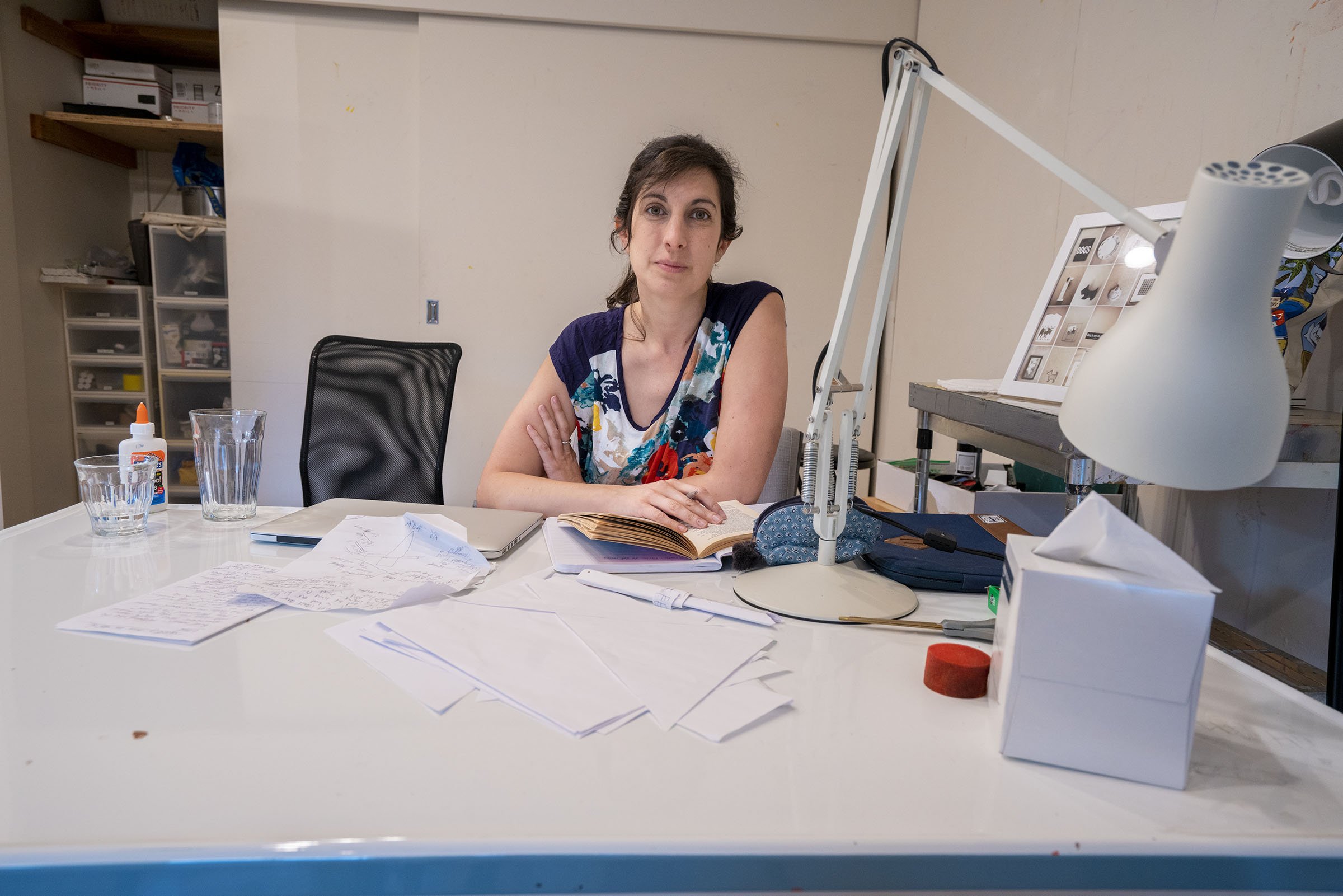Atalya Laufer
Visual Artist—January through June ’22
Website atalyalaufer.com | Based In Berlin, Germany
Q: There are no explicit “deliverables” for the Peleh residency, but residents create a lot of work while they are in Berkeley, and/or create space for new work to happen when they return home. What was your experience in terms of how you worked, and what you got done?
A: I need to enjoy the process of making art. If I’m “in it,” then the outcome will come, and be the right thing. Other artists need to know what they want to do, and not like the surprises. For sure I need to have some idea of what I want to make. I think most artists do. Having said that, I got a lot of work done, which has led to my participation in several exhibitions, in both galleries and in non-traditional spaces like a cemetery.
Q: It sounds like you came back to Berlin with a lot of energy and ideas.
A: My experience of being able just to do art when I was in Berkeley meant that when I returned, I was able to focus much more on making art, and less on “jobbing” to pay the bills. I’ve also been able to give a lot of workshops.
Q: Your new body of work extends your interest in inter-generational conversations and interpretations, which in the past has led to a kind of merging, or inter-penetration, of your work and the work of artists who have died. By “appropriating” and transforming that work, you created a new kind of partnership. In Berkeley, you experimented with a collaboration with your daughter Esther, who was four at the time. What can you say about that experience?
A: I spent a year and a half working with Esther’s drawings, including a year after we returned to Berlin. My method was to make drawings of her drawings, then we painted over them together, and then we did it again and again. From those I made many drawings in different sizes, often much bigger than the original drawings of Esther.
Q: What was Esther most interested in drawing?
A: The key image she made was of a unicorn. Over time Esther’s unicorns became pregnant and gave birth. The minute I saw the unicorns inside the unicorns, I realized it was a symbol of art and creation. It helped me understand where Esther and I were in this chain of creativity, and it also complicated it. Who and what is giving birth to what? My work then became figuring out what form my work would take.
Q: What forms did “pregnant unicorns” suggest to you?
A: One form is that of curtains I’ve had the chance to create and hang them differently in different exhibitions. For the exhibition "Gebäude 501,” at the old Tempelhoferfeld Airport, I re-worked the unicorns into a curtain. By stencilling my drawings I recall cave painting where mystery and aspects of teaching and spirituality go hand in hand. I also made a stool. I’m especially pleased with the stool, in part because it has four legs, and that gives it an animal quality that I appreciate.
Q: When you were in Berkeley, you discovered a Japanese word — Ma — that refers to the invisible but palpable space between people or things. That word seemed to unlock some additional connections for you in terms of working in a kind of in-between space.
A: Yes, that idea opened a lot of ideas for me. Apart from the Japanese use of the word, Ma also means “what?” in Hebrew. It is also the first syllable most babies pronounce, some version of “mother.” A recent exhibition I was in used “Ma” as the title. A key idea, as a curator wrote in one of the shows, is for art to have enough space “to breathe” itself into existence.”
Q: Any final thoughts about the overlap of art and parenting?
A: There are different kinds of artists like there are different kinds of parents. I am a “responder” for both. Things change the moment you interact with them, so you need to respond. I love this quote I read somewhere: “I was the best mother before I became one.” She meant she knew the right thing to do in the abstract. But that’s not how life is.
Atalya Laufer creates drawings, collages, sculpture, and installations that are often appropriations of biographical and/or art-related historical material. Her works ultimately deal with questions of identity, boundaries, and projection, while avoiding clear classification. Delving into the works of other artists and writers, Laufer creates new works that are authentically her own, producing collaborations that transcend time and place. This intergenerational dialogue is at times humorous, even bordering on the absurd but always humane.




